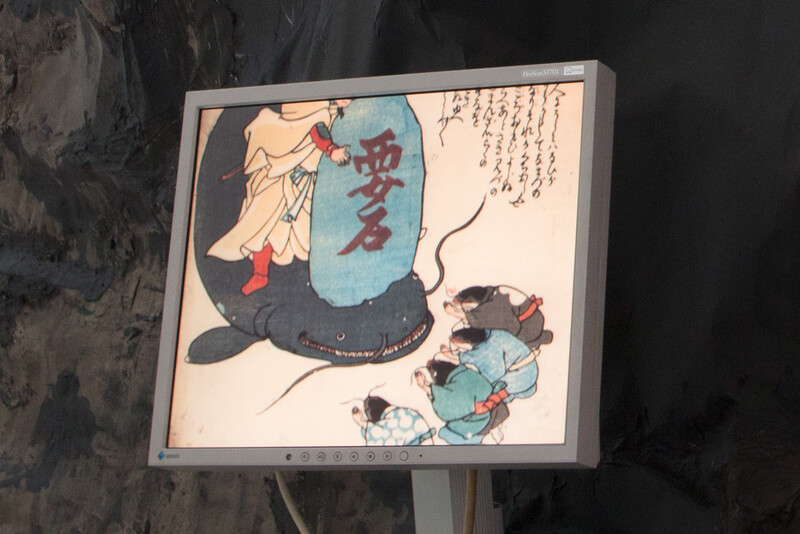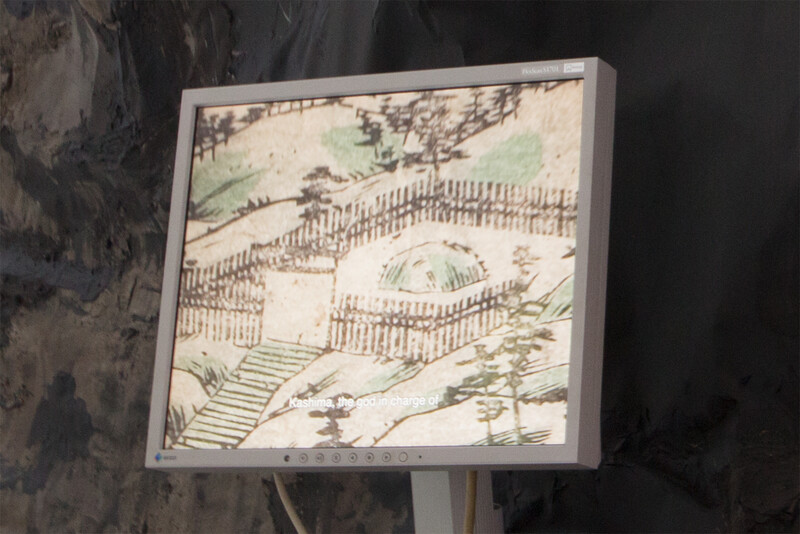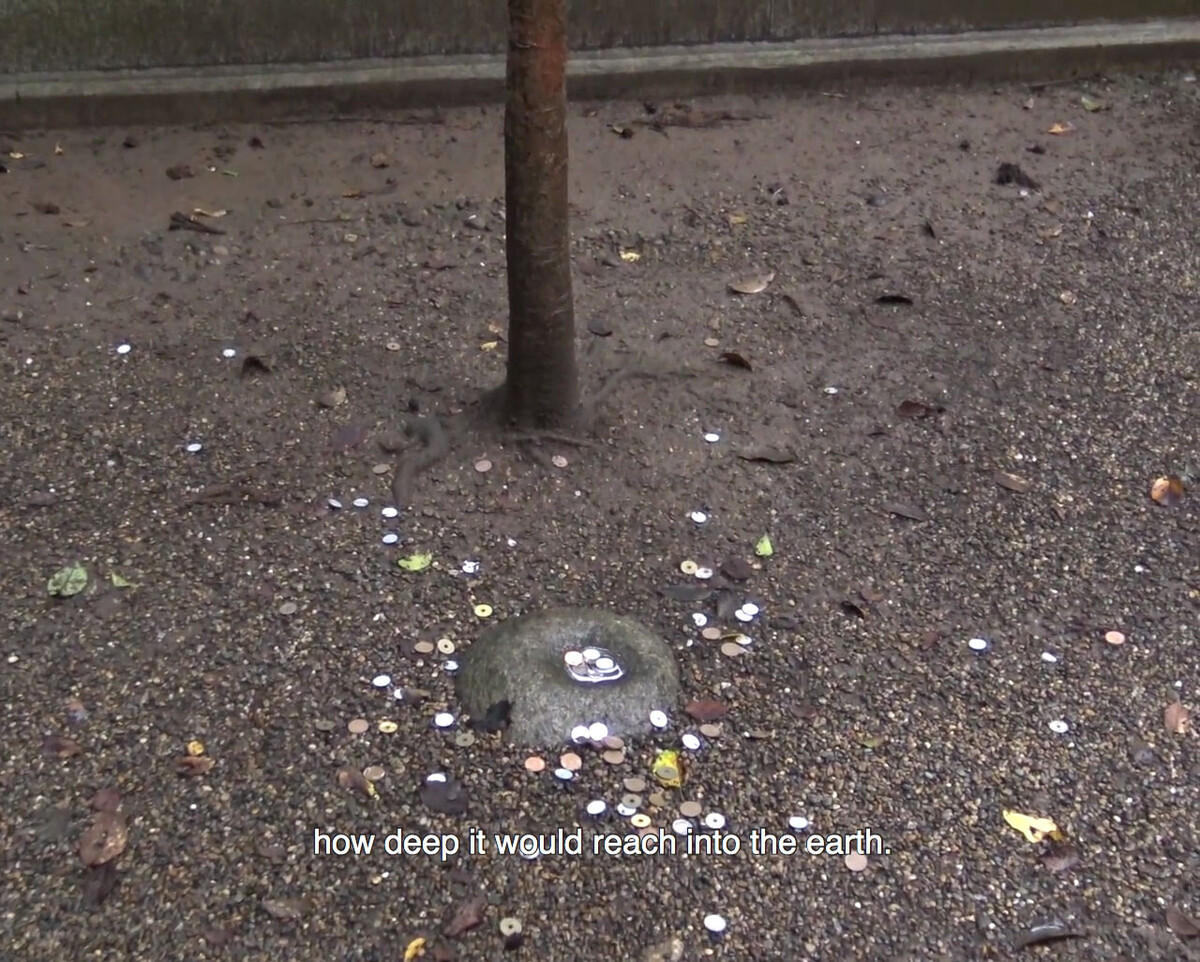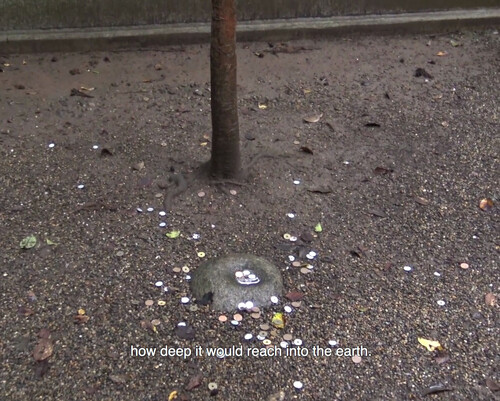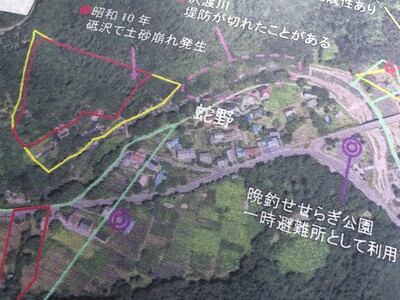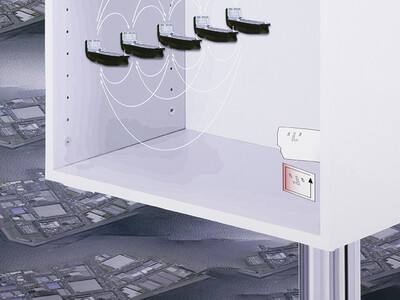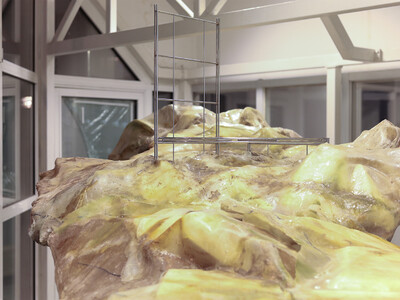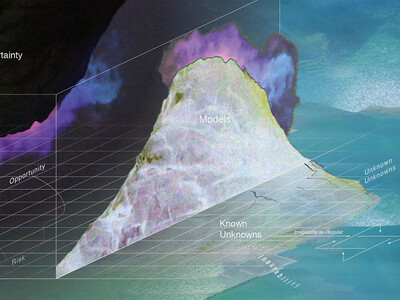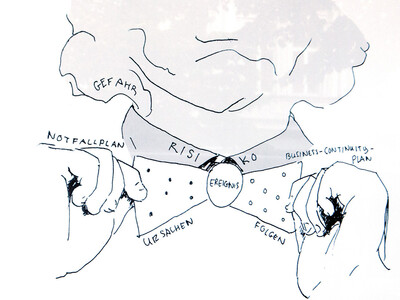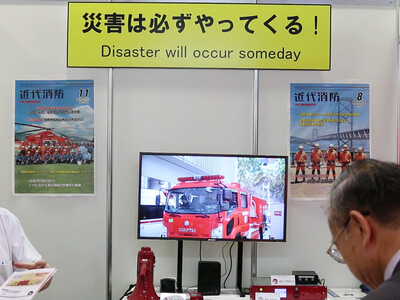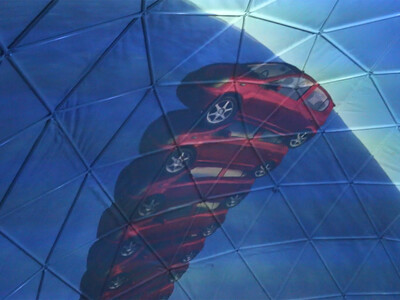
Standardized Waters was the result of a communal effort by Dimitra Dimopoulou, Krini Dimopoulou, Manolis D. Lemos, George Tigkas, Jerome Aizpuro Suplemento, Vincent Grunwald and Florian Goldmann.
Find a documentation of the exhibition here.
Standardized Waters
Since ancient times the oceans have been a source of chance as well as of fear. Their conquest promises for profit but implies great dangers. At times it was regarded wise to avoid leaving firm land categorically, as the ocean, the unfirm, was thought of as humanities’ antagonist per se.Later, in the context of medieval maritime trade, risk was distinguished from hazards. While hazards were attributed to the environment, the gods, or the sea itself, risks were attributed to decisions. The exposure to risk is deliberately sought, whereas hazards are generally avoided. This basic distinction can be understood as the foundation of today’s world-encompassing trading structures of which seafaring is still the fundamental component.
From the perspective of the office desks of shipping companies in Piraeus, London or Singapore the oceans are considered mere infrastructure. The risks that lie hidden beneath the water surface are carefully calculated, located and administered as insurables. The unfirm is rationalized and becomes an exchangeable commodity. Yet, whereas radiation leaks, refugee boats, floating plastic islands and giant oil-spills on rising sea levels have been factored in as standard and are generally understood as status quo, the oceans still hold surprises. The impossibility to include the human factor, the calculator herself, in the equation makes for unknowns beyond calculability. The contingency of these unknowns is the defining factor of contemporary seascapes. The physics of water won’t allow for maritime pathways to be beaten paths.
Ground Motion Leveler
According to a belief that gained popularity in nineteenth-century Japan, earthquakes are caused by Namazu, a giant catfish that dwells beneath the archipelago. It was said that devastating tremors would occur, whenever one of the gods in charge of keeping the catfish in check was distracted. Earthly phenomena, such as the wrongdoings of the ruling class, were considered possible causes of the distraction of the gods. To protect their houses from being destroyed, people would put up so called Namazu-e (lit. catfish pictures), graphic reproductions of Namazu being controlled and, at times, punished by the respective gods for having caused previous earthquakes. Kashima, the god considered mainly in charge of keeping the catfish in check, restrains it with a massive stone placed on its head. Among other places, it is said that the tip of this stone projects through the earth’s surface at a shrine near Tokyo. A legend reports that a feudal lord attempted to excavate the stone to see how deep it would reach into the earth. He gave up after 7 days, as the pit filled up again mysteriously every night.
It was thought that by causing earthquakes, the Namazu would challenge established political and economic power relations, redistribute wealth and thereby restore a general equilibrium that, from the perspective of the governed, had been suspended by the rulers. In accordance with Confucian thought, it was believed that the flow of wealth, just as the flow of bodily fluids or the flow of energy in the universe, should circulate perpetually.Smits, Gregory: Shaking up Japan: Edo Society and the 1855 Catfish Picture Prints, in: Journal of Social History, vol. 39, no. 4 (2006), p. 1059 f. Therefore another popular theme of Namazu-e was the depiction of representatives of the trades either those harmed by or who benefit from the consequences of earthquakes. Carpenters, for instance, were considered beneficiaries since it was up to them to rebuild the city.ibid, p. 1057 ff.
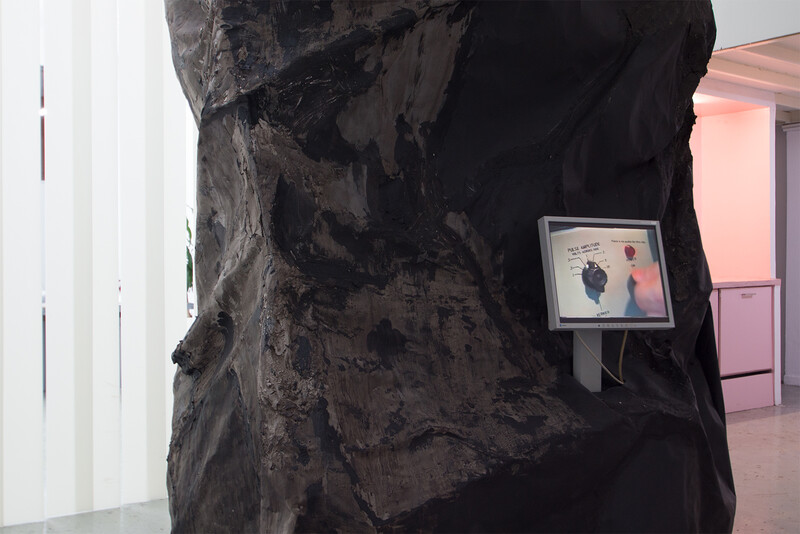
Ground Motion Leveler
Nach einem Glauben, der im 19. Jahrhundert in Japan verbreitet war, werden Erdbeben von Namazu ausgelöst, einem gigantischen Katzenfisch, der unter dem japanischen Archipel liegt. Es hieß, dass zerstörerische Beben sich immer dann ereignen würden, wenn die mit der Aufgabe, den Namazu zu bewachen betrauten Götter abgelenkt sind. Weltliche Ereignisse, beispielsweise politische Entscheidungen oder die Missetaten der herrschenden Klasse, wurden als mögliche Ursachen für die Nachlässigkeit der Götter und somit für die auf diese folgenden Erdbeben betrachtet. Um ihre Häuser vor den bekannten Folgen von Erdbeben zu schützen, hingen sich die Menschen Namazu-e (wörtl. Katzenfisch-Bilder) auf, Druckgraphiken, die Namazu von den Göttern unter Kontrolle gehalten oder von diesen für das Auslösen früherer Erdbeben bestraft zeigen. Kashima, der Gott der als hauptverantwortlich dafür gilt, den Katzenfisch in Zaum zu halten, fixiert diesen mit einem gewaltigen Stein, den er auf dessen Kopf platziert. Neben anderen Orten, heißt es von einem Schrein nahe Tokyo, dass die Spitze dieses Steins dort aus der Erdoberfläche ragt. Nach einer Sage versuchte einst ein Feudalherr den Stein auszugraben, um zu prüfen, wie tief er in die Erde reichen würde. Er habe das Vorhaben nach sieben Tagen aufgegeben, da sich die Grube jede Nacht wie von selbst erneut verfüllte.
Man sprach dem Erdbebenfisch zu, durch das Auslösen von Erdbeben fest etablierte politische und ökonomische Machtverhältnisse in Frage zu stellen, Reichtum umzuverteilen und so ein allgemeines Gleichgewicht wiederherzustellen, welches, aus der Perspektive der Regierten, von den Regierenden ausgesetzt wurde. Gemäß konfuzianischer Auffassung sollten sich, analog zu Körperflüssigkeiten oder den Energieströmen des Universums, auch Vermögen und Macht fortwährend in Fluss befinden.Smits, Gregory: Shaking up Japan: Edo Society and the 1855 Catfish Picture Prints, in: Journal of Social History, vol. 39, no. 4 (2006), S. 1059 f. Entsprechend ist ein weiteres populäres Sujet der Namazu-e, die Darstellung jener Berufsgruppen, die von den Konsequenzen der Beben entweder in besonderem Maße betroffen sind oder von diesen profitieren. So galten zum Beispiel Zimmermänner als Profiteure, da es an ihnen war, die erdbebenzerstörten Städte wieder aufzubauen.ebd, S. 1057 ff.
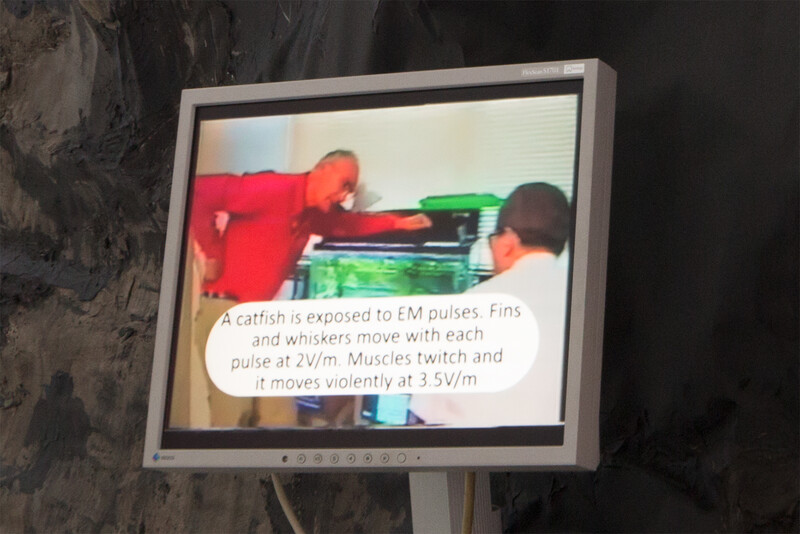
Standardized Waters
Από την αρχαιότητα οι ωκεανοί υπήρξαν πηγή ευκαιριών αλλά και φόβου. Η κατάκτησή τους υπόσχεται κέρδη αλλά επιφυλάσσει μεγάλους κινδύνους. Κατά καιρούς θεωρούταν σοφό να αποφεύγεται η εγκατάλειψη του στέρεου εδάφους, καθώς ο ωκεανός, το μη-στέρεο, αντιμετωπιζόταν ως ο ανταγωνιστής της ανθρωπότητας.Αργότερα, στα πλαίσια του μεσαιωνικού ναυτικού εμπορίου, το ρίσκο διαφοροποιήθηκε από τον κίνδυνο. Ενώ οι κίνδυνοι αποδίδονταν στο περιβάλλον, τους θεούς, ή την ίδια τη θάλασσα, τα ρίσκα αποδίδονταν σε αποφάσεις. Η έκθεση στο ρίσκο αναζητάται, ενώ οι κίνδυνοι γενικώς αποφεύγονται. Αυτή η βασική διάκριση μπορεί να κατανοηθεί ως η βάση των σημερινών παγκοσμίων εμπορικών δομών, των οποίων η ναυτιλία αποτελεί ακόμα το βασικό συστατικό.
Από την οπτική των γραφείων ναυτιλιακών εταιρειών στον Πειραιά, το Λονδίνο ή τη Σιγκαπούρη, οι ωκεανοί αποτελούν απλή υποδομή. Τα ρίσκα που βρίσκονται κρυμμένα κάτω από την επιφάνεια του νερού υπολογίζονται με προσοχή, εντοπίζονται και αντιμετωπίζονται ως ασφαλίσιμα. Το μη-στέρεο λογικοποιείται και μετατρέπεται σε ανταλλάξιμο είδος. Ενώ οι διαρροές ραδιενέργειας, οι βάρκες προσφύγων, τα επιπλέοντα πλαστικά νησιά και οι μεγάλες πετρελαιοκηλίδες στη διαρκώς υψούμενη στάθμη της θάλασσας έχουν εγγραφεί ως κανονικά και γενικώς κατανοούνται ως status quo, οι ωκεανοί εξακολουθούν να επιφυλάσσουν εκπλήξεις. Η αδυναμία να συμπεριληφθεί ο ανθρώπινος παράγοντας, ο ίδιος ο εκτιμητής, στην εξίσωση αφήνει χώρο σε άγνωστα πέρα από κάθε προσπάθεια υπολογισμού. Το απροσδόκητο αυτών των αγνώστων είναι ο καθοριστικός παράγοντας μιας σύγχρονης θαλασσογραφίας. Η φύση του νερού δεν θα επιτρέψει τα ναυτιλιακά υδάτινα μονοπάτια να γίνουν τιθασευμένα τοπία.
